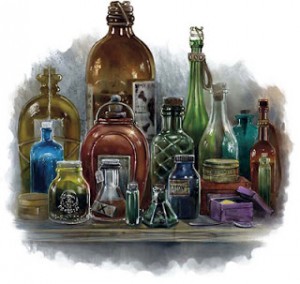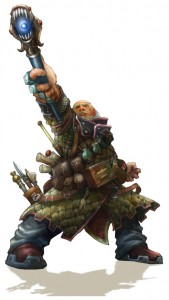On Friday we comb through our extensive archives to find an older article that we feel deserves another look. From July 13, 2009, Dungeon’s Master once again presents: What’s a +1 Sword?
“That’s a beautiful blade,” noted the barkeep as he served the adventurers their ale. “Is it magical?”
“It sure is,” replied Delian the Paladin. “I found this in the ogre’s lair. It’s a +1 sword.”
“What’s a +1 sword?”
How often do you refer to your PC’s gear only in gaming terms? Sure the people sitting at your dining room table playing D&D know what a +1 sword is, but how would you describe the same weapon in character to an NPC? You’d sound pretty stupid if you called it a +1 sword. Not to mention that no one would understand what you mean when you call it a +1 sword.
Magical treasure is the most common reward in D&D. All PCs strive to acquire magic loot be it a magical wand, a suit of magical plate mail or even a magic sword. In most Dungeons & Dragons campaign settings magic items are fairly commonplace. To an experienced gamer owning a magical weapon may not seem like a big deal. In fact most PCs or NPCs worth their salt have one. But just because the magic items are common doesn’t mean that they aren’t special. It’s not like they’re mass produced in a factory and are indistinguishable from one another – quite the opposite in fact. Creating a magic item of any kind requires time, resources and aptitude. Anyone who chooses to create a magic item wants to make it unique. So just because you’ve got a magic sword and I’ve got a magic sword doesn’t mean that they’re the same.


